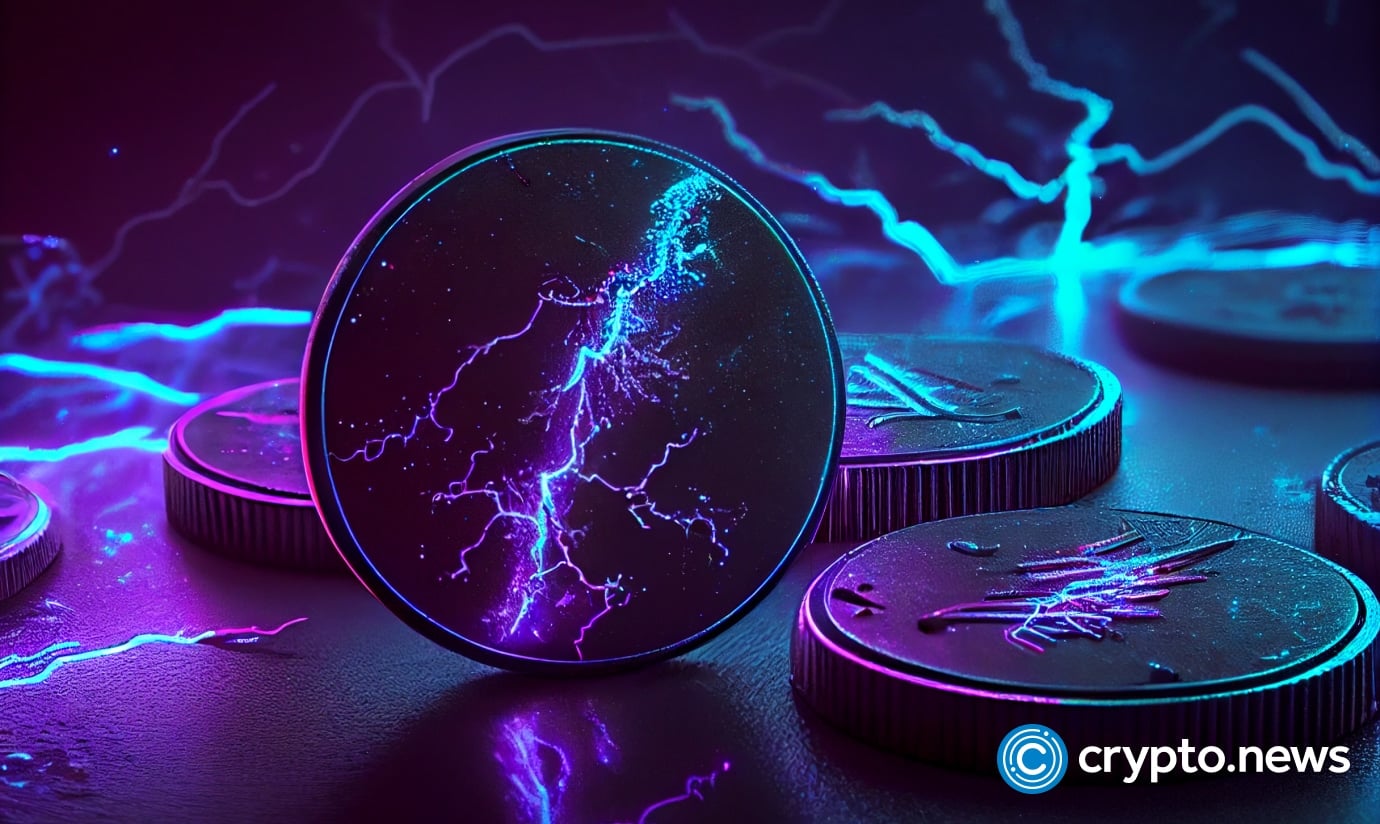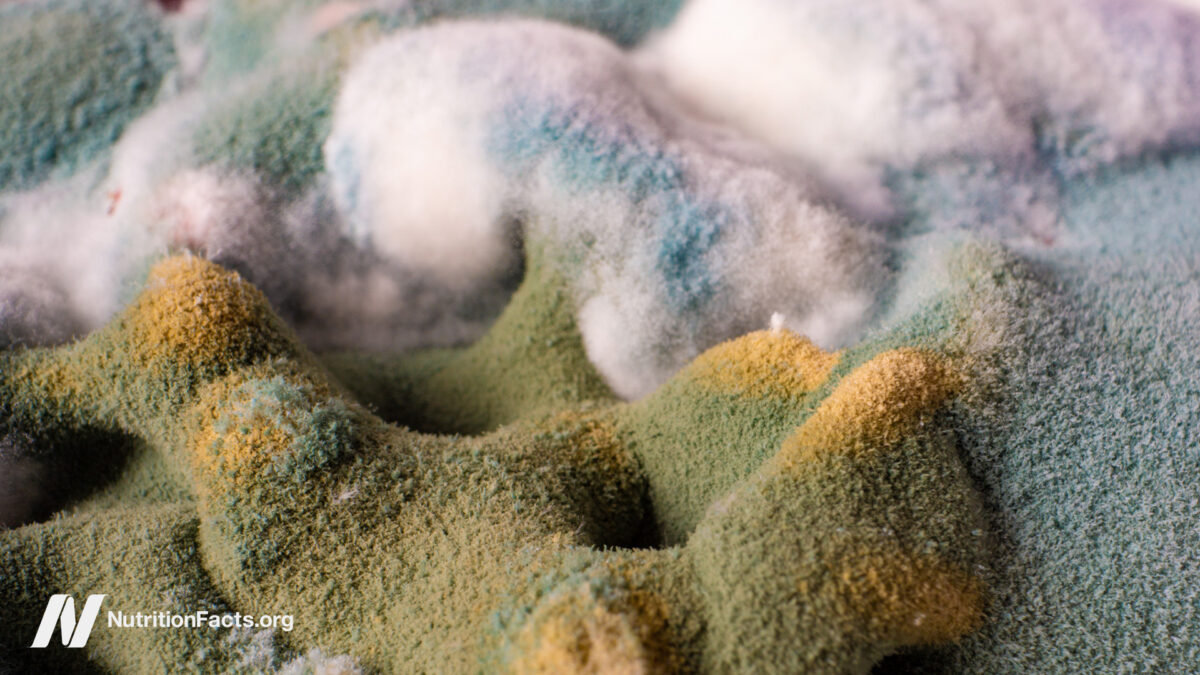The 7 Chakra Colors Explained: Meaning, Symbolism & Science
The concept of chakras comes from ancient yogic teachings that describe the human body as a network of energy centres. These centres, called chakras, regulate the flow of prana our vital life force through pathways known as nadis. While...

 image source: shutterstock
image source: shutterstockThe concept of chakras comes from ancient yogic teachings that describe the human body as a network of energy centres. These centres, called chakras, regulate the flow of prana our vital life force through pathways known as nadis. While the body is believed to contain 114 chakras, seven primary chakras play the most significant role in maintaining physical, emotional, and spiritual balance.
Each of these seven chakras is associated with a specific colour from the visible light spectrum. These chakra colours represent the vibrational frequency of each energy centre and reflect its qualities:
Root Chakra (Muladhara) – Red Sacral Chakra (Svadhishthana) – Orange Solar Plexus Chakra (Manipura) – Yellow Heart Chakra (Anahata) – Green Throat Chakra (Vishuddha) – Blue Third Eye Chakra (Ajna) – Indigo Crown Chakra (Sahasrara) – VioletIn this guide, we’ll explore the meaning behind each chakra colour, their scientific connection to frequency, and how they influence your energy and well-being.
Why do chakras have colors? what is their significance?
 Image: shutterstock
Image: shutterstockChakra colors are not just symbolic they are rooted in the science of light and energy. Each chakra corresponds to a specific frequency of vibrating energy, much like colours in the visible light spectrum.
Light, as we perceive it, is made up of electromagnetic waves vibrating at different frequencies. These vibrations appear to us as colours. The energy centres (chakras) in the human body also vibrate at certain frequencies, and these frequencies fall within the visible spectrum of light (400–790 THz).
For example:
The Root Chakra vibrates at around 200–400 THz, appearing red the lowest visible frequency. The Sacral Chakra resonates between 484–508 THz, appearing orange. The Solar Plexus Chakra vibrates in the range of 508–586 THz, appearing yellow.This pattern continues upward, with each higher chakra corresponding to a higher frequency and lighter colour just like the colours of a rainbow.
The connection between chakras and rainbow colours was popularised by Dr. Christopher Hills in his book Nuclear Evolution: Discovery of the Rainbow Body. He introduced the idea of aligning chakra energies with the colours of the rainbow. Prior to this, various yogic texts referenced different colour associations based on symbolic or energetic interpretations.
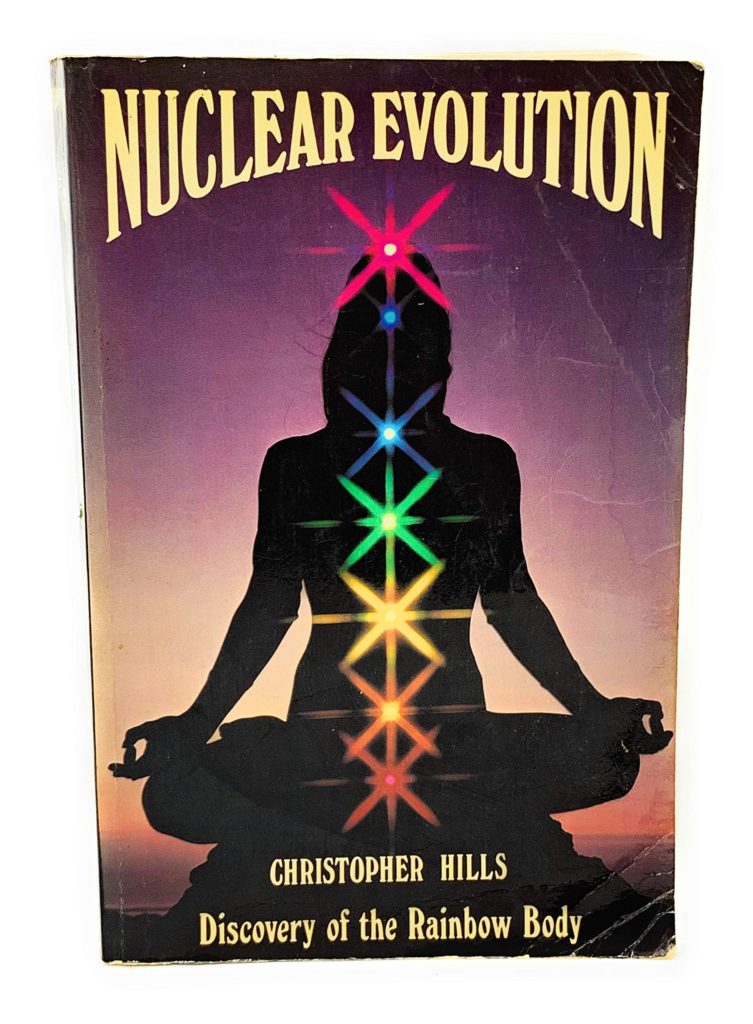
Significance
Each chakra colour carries a specific meaning that reflects the role and energy of that chakra. These colours are more than just visual symbols—they represent the vibrational qualities of each energy centre.
For example, red, the colour of the Root Chakra, symbolises survival, strength, and vitality. It stimulates physical energy, courage, and the instinct to stay grounded and secure.
Although chakras exist in the subtle (astral) body and are not visible to the physical eye, their colours can sometimes be perceived in the aura of individuals who are in deep states of meditation or heightened spiritual awareness.
The vibration of each colour helps regulate and sustain the flow of energy within the body. These vibrations influence your:
Physical well-being (like energy levels and health) Mental clarity (thoughts, emotions, focus) Spiritual awareness (intuition, inner peace, higher connection)Practices like colour therapy, chakra meditation, or visualisation can help restore balance to these energy centres. When you align with the right colour for a blocked chakra, it becomes easier to clear energy stagnation and support healing on multiple levels.
Next, let’s explore each chakra in detail and understand how its colour relates to your body, mind, and spirit.
1. Root Chakra(muladhara)
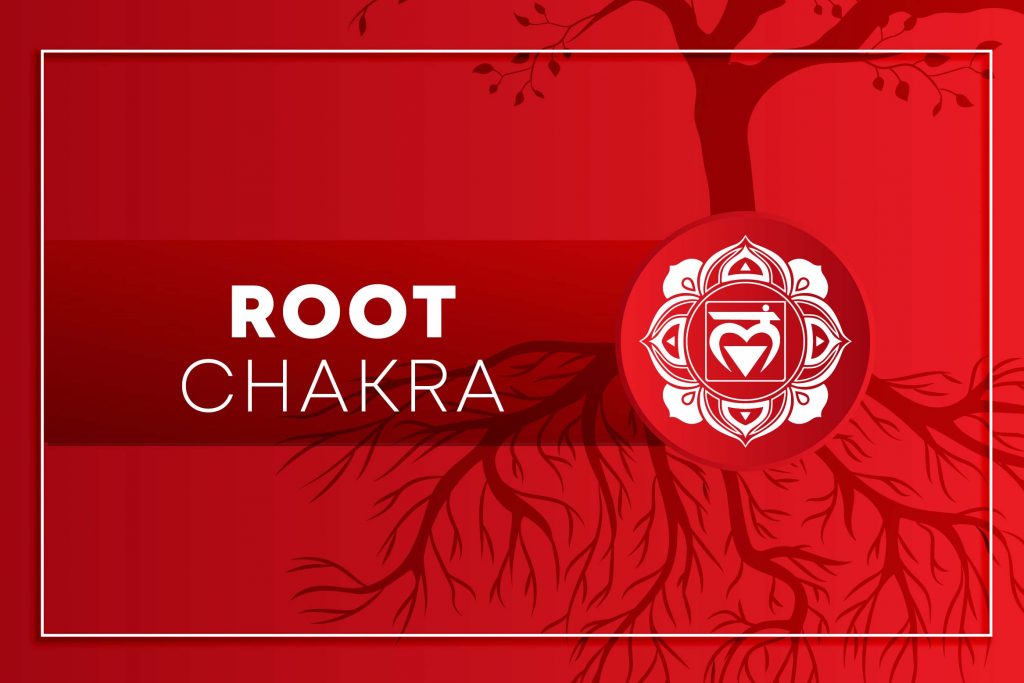 Image: Fitsri
Image: Fitsri| Color | Red |
| Frequency | 620–750 nm (400–484 THz frequency) |
| Location | Bottom of the spine, near the tailbone |
| Element | Earth |
The Root Chakra, or Muladhara, is the foundation of the chakra system. It represents our basic survival needs food, water, shelter, safety, and physical stability. When this chakra is balanced, you feel grounded, secure, and less burdened by daily worries. When blocked, it may cause fear, anxiety, or insecurity.
Red color meaning & significance
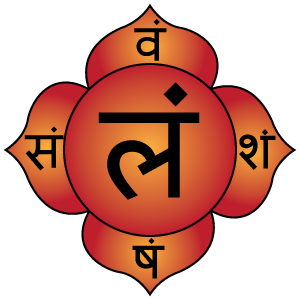
The colour red is bold, dense, and full of vitality. It is the most stimulating of all colours and symbolises life force, courage, and physical strength. Red is the first colour in the visible spectrum, with the longest wavelength and lowest frequency, making it deeply connected to the physical body and material world.
Red also activates our instincts alerting us to danger and preparing us to react. This is why it resonates with the survival instinct housed in the root chakra. Because the root chakra sits at the base, it supports and stabilises the entire energy system—just like roots anchor a tree.
The red colour plays a significant role in being connected with the root chakra. Its significance can be seen in physical, mental & spiritual level:
1. Physical level
Red is linked to the adrenal glands, which control the “fight or flight” response. It influences your bones, legs, feet, and large intestine. A strong red chakra reflects good stamina, vitality, and connection to the Earth.
2. Mental level
Mentally, red stimulates willpower, determination, and drive. It builds confidence and helps you take decisive action. However, excess red energy may lead to anger or aggression, while a weak red chakra may cause lethargy or fearfulness.
3. Spiritual level
Spiritually, red grounds your energy and keeps you connected to the present moment. It reminds you that your body is your temple and that stability is the first step toward higher spiritual growth.
2. Sacral Chakra(svadhishthana)
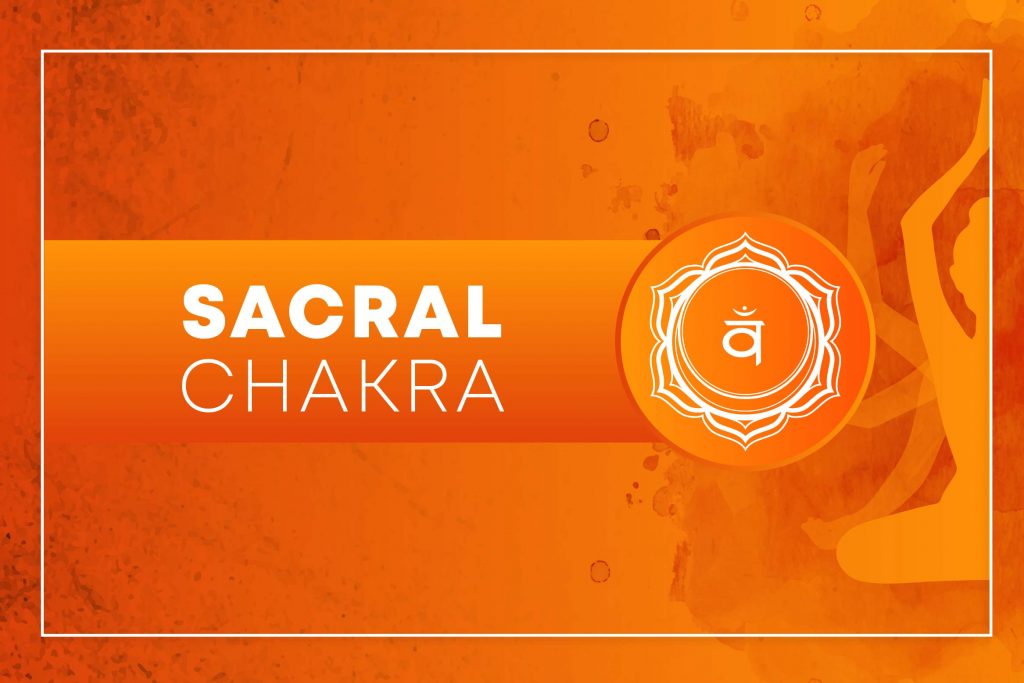
| Color | Orange |
| Frequency | 590–620 nm |
| Location | Below the belly button, pubic bone |
| Element | Water |
The Sacral Chakra, or Svadhishthana, is the second energy centre in the body. It governs emotions, pleasure, creativity, sensuality, and relationships. Located in the lower abdomen, this chakra influences the reproductive organs, hips, bladder, kidneys, and lower back.
When balanced, the sacral chakra allows you to enjoy life, form healthy emotional connections, and express yourself freely. When blocked, it can cause emotional instability, low libido, or lack of motivation.
Orange color meaning & significance
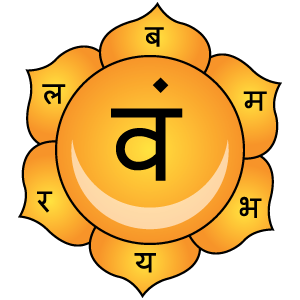
The colour orange combines the grounding energy of red with the lightness of yellow. It symbolises joy, enthusiasm, creativity, and emotional flow. As the colour of the sacral chakra, orange resonates with your inner self—your feelings, passions, and desires.
Orange is a warm and inviting colour that reflects your ability to feel deeply, connect intimately, and express yourself authentically. It awakens your creativity and helps you enjoy life with more spontaneity.
The orange hue is beneficial to health in many ways.
1. Physical level
Orange is associated with the reproductive system, bladder, colon, and digestive organs. It governs energy used for reproduction, assimilation, and elimination. A healthy sacral chakra supports hormonal balance, vitality, and physical comfort.
The vibratory energy that propagates from orange shade plays the role of converting Prana into energy, which is then used for vital organ function and reproduction.
2. Mental level
Mentally, orange stimulates creativity, emotional expression, and joy. It encourages openness and flexibility in your thoughts and behaviour. A balanced sacral chakra helps you navigate relationships, set healthy boundaries, and embrace change.
3. Spiritual level
On a spiritual level, orange connects you to your inner truth and emotional wisdom. It supports transformation through emotional healing and strengthens your ability to find pleasure and purpose, even during life’s challenges.
3. Solar Plexus Chakra(Manipura)
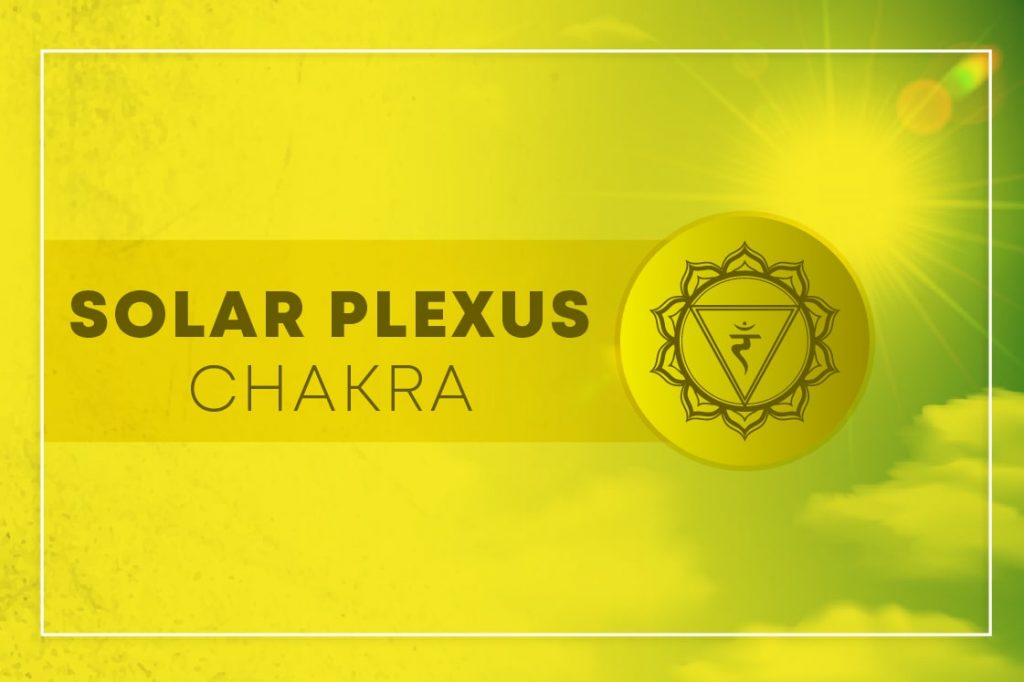 Image: Fitsri
Image: Fitsri| Color | Yellow |
| Frequency | 570–590 nm |
| Location | Upper belly at the diaphragm |
| Element | Fire |
The Solar Plexus Chakra, or Manipura, is the third chakra and the centre of personal power, confidence, and will. It governs your self-image, identity, autonomy, and your ability to make choices with clarity and purpose.
When this chakra is balanced, you feel motivated, confident, and ready to take control of your life. When blocked, it may lead to low self-esteem, indecisiveness, or a sense of powerlessness.
Yellow color meaning & significance

The colour yellow represents sunlight, vitality, and clarity. It reflects the bright, fiery energy of the solar plexus chakra, often described as the place where your inner “spark” lives.
Yellow is the colour of personal growth, mental clarity, and confidence. It lights up your inner fire, pushing you to move forward, speak up, and act with determination. It also symbolises new beginnings and transformation.
1. Physical level
Yellow energy is connected to the digestive system, including the stomach, pancreas, liver, gallbladder, and abdominal muscles. A balanced solar plexus chakra supports healthy digestion, posture, and core strength.
People with strong yellow chakra energy stand tall, feel energised, and move with purpose. A weak or imbalanced solar plexus may show up as poor posture, fatigue, or digestive issues.
2. Mental level
Mentally, the yellow chakra supports willpower, confidence, and self-discipline. It helps you set boundaries, make decisions, and trust in your abilities.
Meditating on the colour yellow can boost focus, sharpen memory, and give you the courage to take action. It also uplifts the mood and keeps negative thinking in check.
3. Spiritual level
Spiritually, yellow is the light of self-awareness and inner transformation. It fuels your journey toward self-realisation and emotional maturity.
This vibrant colour is known for its uplifting, energising effects. It can help restore motivation during times of doubt, anxiety, or emotional burnout especially when the nervous system feels overwhelmed.
4. Heart Chakra(Anahata)
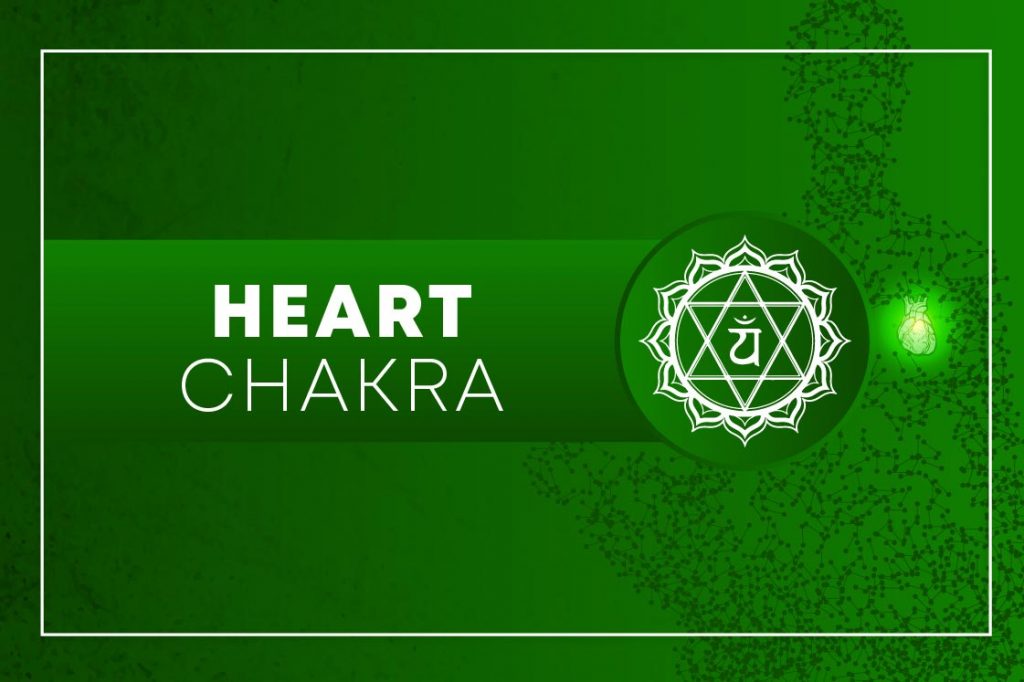
| Color | Green |
| Frequency | 495–570 nm |
| Location | Center of chest |
| Elements | Air |
The Heart Chakra, or Anahata, is the fourth chakra in the body’s energy system. It governs your capacity to give and receive love, feel compassion, and maintain healthy emotional relationships. It is the centre of empathy, forgiveness, trust, and inner peace.
When this chakra is open and balanced, you experience deep connections with others, emotional healing, and love for yourself. When blocked, it can lead to emotional numbness, resentment, or fear of intimacy.
Green color meaning & significance
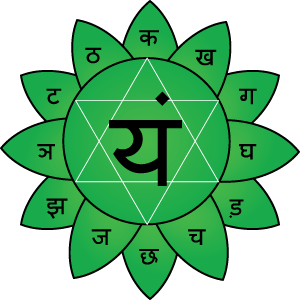
The colour green represents balance, renewal, and unconditional love. It connects the physical and spiritual aspects of your being, bridging the lower three chakras (body) with the upper three chakras (mind and spirit).
Green is also the colour of nature, symbolising growth, harmony, and healing. The energy of this colour helps soothe emotional pain, calm the nervous system, and restore a sense of wholeness.
When the heart chakra is aligned, the green energy transforms ego into compassion and helps form deeper, lasting connections.
1. Physical level
The green chakra influences the heart, lungs, chest, upper back, shoulders, arms, and thymus gland. A healthy heart chakra supports the immune system, healthy breathing, and cardiovascular health.
2. Mental level
Mentally, green energy encourages emotional openness, forgiveness, and trust. It supports healing from past emotional wounds, especially in relationships.
This is the chakra where many people carry unhealed emotions, making it a centre of deep personal transformation.
3. Spiritual level
Spiritually, the heart chakra is where love and unity begin to transcend personal relationships and extend toward all beings. The green light of Anahata helps you develop unconditional love, connect with your true self, and grow into spiritual compassion.
5. Throat Chakra (Vishuddha)
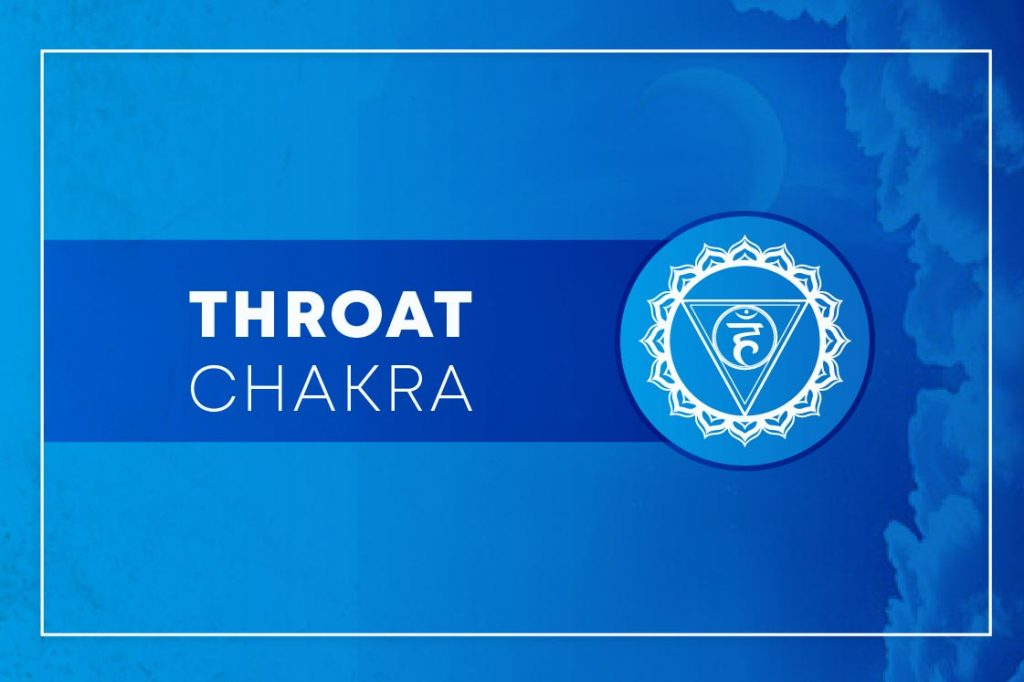 Image: Fitsri
Image: Fitsri| Color | Blue |
| Frequency | 450–495 nm |
| Location | Base of the throat |
| Element | Ether (Space) |
The Throat Chakra, or Vishuddha, is the fifth chakra and the centre of communication, self-expression, and truth. The word Vishuddha in Sanskrit means “especially pure,” reflecting this chakra’s role in honest speech and clear understanding.
When balanced, this chakra helps you speak your truth, listen with awareness, and express your ideas clearly. When blocked, it may cause fear of speaking, miscommunication, or difficulty expressing emotions.
Blue color meaning & significance
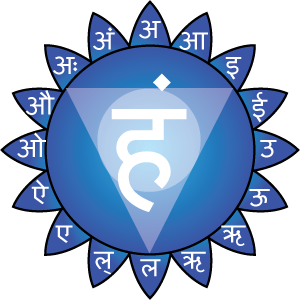
The colour blue is calm, cool, and expansive. It symbolises clarity, integrity, and creative expression. Just like the open sky, blue opens up space within you, allowing thoughts and feelings to flow freely.
The blue energy of the throat chakra supports honest communication, both verbal and non-verbal. It also encourages deep listening, authenticity, and the courage to express your beliefs without fear.
When energy flows smoothly through this chakra, you are better able to share your truth and connect with others through thoughtful words and presence.
1. Physical level
The throat chakra is linked to the neck, throat, vocal cords, mouth, jaw, and thyroid gland. A healthy throat chakra supports clear speech, smooth breathing, and overall vocal health.
People with balanced blue energy often hold themselves with confidence and poise, while imbalances may show up as tight shoulders, poor posture, or chronic throat issues.
2. Mental level
Mentally, blue is connected to symbolic thinking our ability to use language, art, or expression to share thoughts and ideas. It enhances imagination, articulation, and cognitive clarity.
A strong throat chakra helps you find the right words and express even complex emotions with ease.
3. Spiritual level
Spiritually, the throat chakra supports creativity, inner truth, and divine connection. It allows you to express your soul’s voice through writing, speaking, singing, or any creative outlet.
When this chakra is activated, you feel aligned with your inner purpose, guided by a deep sense of knowing and truth.
6. Third Eye Chakra(Ajna)
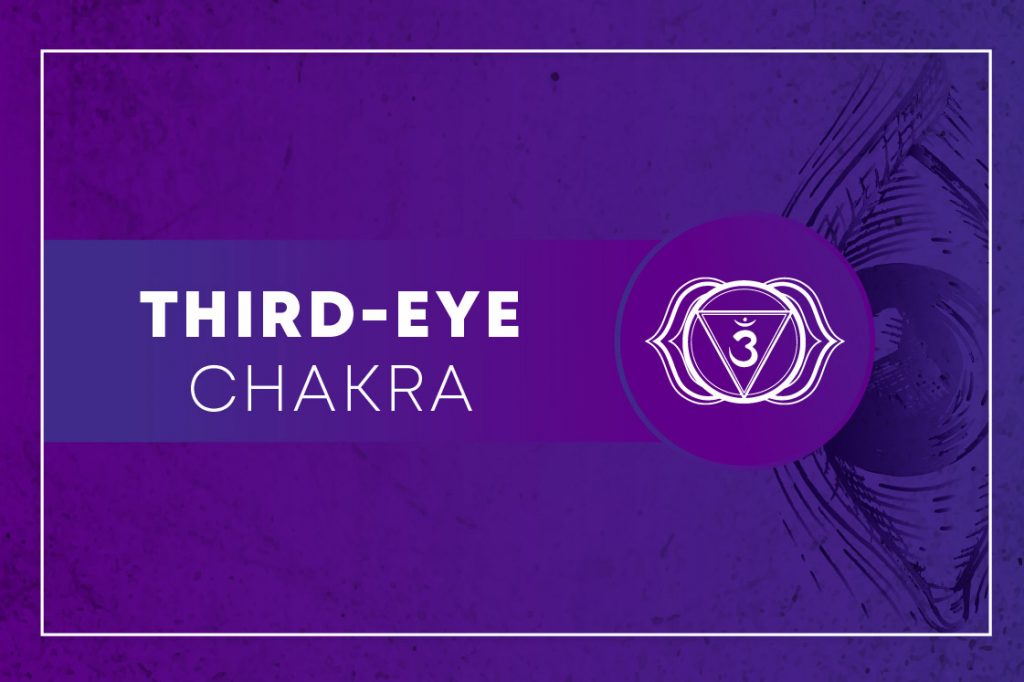 Image: Fitsri
Image: Fitsri| Color | Indigo |
| Frequency | – |
| Location | Center of forehead |
| Element | Light |
The Third Eye Chakra, or Ajna, is the sixth chakra and the centre of intuition, insight, and inner vision. It helps you go beyond surface-level thinking and tune into a deeper understanding of yourself and the world around you.
When this chakra is open and balanced, you experience mental clarity, heightened awareness, and a strong sense of direction. It supports your ability to visualise, imagine, and trust your inner guidance.
Indigo color meaning & significance
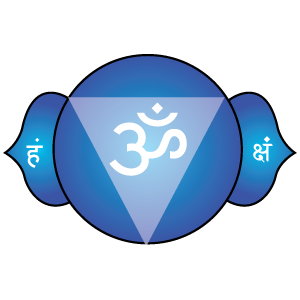
The colour indigo, often seen as a deep blue or royal blue, represents wisdom, spiritual awareness, and higher perception. It’s the colour of the night sky—mysterious, expansive, and full of unseen knowledge.
Indigo sharpens your senses and connects you to your sixth sense the ability to perceive what lies beyond logic. It quiets the distractions of the outer world and invites you inward for reflection and intuitive knowing.
When balanced, the indigo chakra energy helps you make wise choices, trust your inner voice, and see things as they truly are not just as they appear.
1. Physical level
The third eye chakra influences the brain, forehead, eyes, pituitary and pineal glands, and nervous system. A healthy Ajna supports balanced sleep, clear thinking, and visual perception.
People with strong indigo energy often have bright, focused eyes and a calm presence that reflects deep understanding.
2. Mental level
Mentally, the indigo chakra supports intuition, imagination, and mental clarity. It allows thoughts and ideas to flow without interference from ego or overthinking.
This chakra helps you move with ease and grace in your decisions what many describe as “effortless action” or moving with the flow of life.
3. Spiritual level
Spiritually, the third eye chakra is the gateway to inner wisdom, higher consciousness, and divine connection. It helps you rise above duality (good/bad, right/wrong) and become the observer of your thoughts and life.
At this level, you begin to understand life from a broader, more spiritual perspective and align your actions with your higher self.
7. Crown Chakra (Sahasrara)
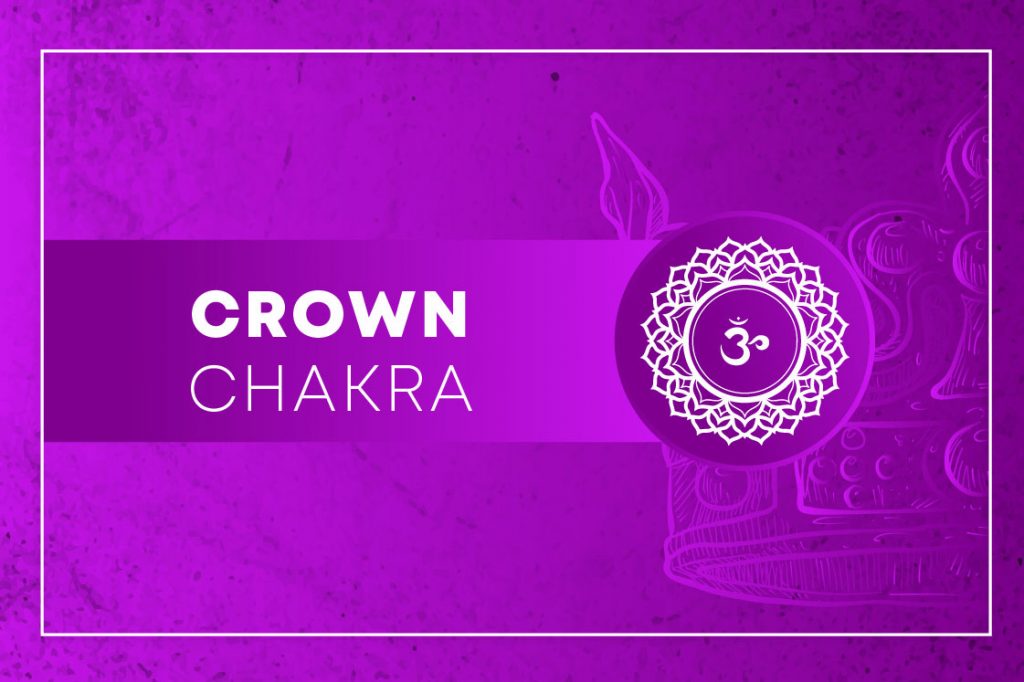 Image: Fitsri
Image: Fitsri| Color | Violet |
| Frequency | 380–450 nm |
| Location | Top of the head |
| Element | Consciousness / Thought |
The Crown Chakra, or Sahasrara, is the seventh and highest chakra in the human energy system. Located at the crown of the head, it represents pure awareness, spiritual connection, and universal consciousness.
This chakra connects you to something greater than yourself divine energy, inner peace, or cosmic intelligence. It is the centre of enlightenment, unity, and transcendence.
When balanced, the crown chakra helps you feel aligned with your higher purpose, detached from ego, and open to spiritual wisdom.
Violet color meaning & significance
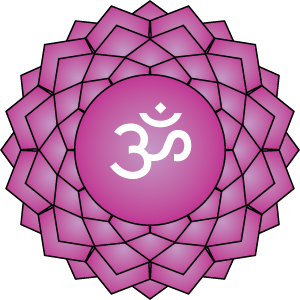
The colour violet is linked with completion, expansion, and higher vibration. It carries the highest frequency of all visible colours and symbolises spiritual awakening and deep inner peace.
Violet also represents transformation and rebirth, like a flower blooming after long stillness. In chakra healing, it is often associated with white or gold light colours that symbolise divinity, truth, and higher realms of consciousness.
A balanced crown chakra brings a feeling of wholeness, helping you rise above material distractions and connect with your soul.
1. Physical level
Physically, the crown chakra is related to the brain, skull, nervous system, and pituitary gland. A balanced Sahasrara supports the smooth flow of energy through all other chakras, helping you feel energetically aligned, peaceful, and mentally clear.
2. Mental level
Mentally, violet energy inspires curiosity, deep thought, and wisdom. People with strong crown chakra energy are often introspective, philosophical, and eager to explore spiritual truths beyond the surface.
They are lifelong learners who seek meaning in every experience.
3. Spiritual level
Spiritually, the crown chakra is the gateway to universal consciousness. It brings a sense of oneness with all beings and opens the path to spiritual growth, divine love, and freedom from ego-driven identity.
This is the energy of silence, stillness, and connection to the infinite.
Conclusion
The seven chakra colours represent more than just beauty they reflect the vibrational blueprint of your body, mind, and soul.
Each colour holds a specific frequency that supports the energy flow in your body. When one chakra is out of balance, it affects your emotions, health, and overall sense of harmony.
By understanding the meaning of each chakra colour and meditating on it, you can begin to restore your body’s energy system and reconnect with your inner self.
Whether you’re dealing with stress, low energy, emotional blocks, or a lack of clarity—working with chakra colours through yoga, meditation, sound, or colour therapy can guide you back into balance.
Keep tuning in to the colours of your energy. They are your inner map to healing, growth, and spiritual awakening.

 JimMin
JimMin 














